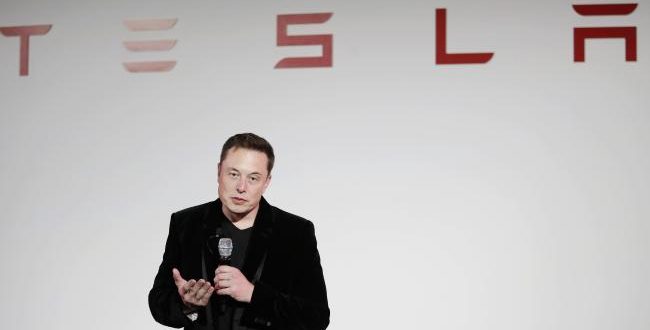Elon Musk has been given a helping hand from a rival in the home battery business in South Australia.
Energy supplier AGL says it has picked out a site for a grid battery farm that Tesla can use for its 100-day challenge.
“AGL has offered Tesla a 100-day ready site as an option to locate a 100 megawatt battery proposed for SA,” AGL said.
The company said it was already considering the site for power storage, in what seemed almost a dare.
The site is additional to a virtual power plant scheme it unveiled in South Australia last year. One thousand residents with solar panels and battery back-up systems will let AGL upload their battery reserves to the grid in times of extreme demand, augmenting supply by 5MW. The upload can be triggered at the touch of a button.
Evergen has implemented a similar system that controls the uploading of solar-generated electricity stored in home batteries. It is part-funded by CSIRO and AMP Capital.
Meanwhile, Carnegie Clean Energy said it was in talks with the state government about its own battery power storage solution.
“I can confirm we are in discussions with the South Australian government as to how we can provide a homegrown, utility-scale battery energy storage solution to the state, and indeed to other state governments,” managing director Michael Ottaviano said. “There is no one in Australia with our track record in utility storage solutions.”
In another development yesterday, Adelaide-based battery storage company Zen Energy announced it will join forces with oil and gas producer Santos to integrate large-scale solar and battery storage with natural gas-based generation.
South Australia Premier Jay Weatherill yesterday tweeted that he would announce a new energy policy for the state today.
It is estimated South Australia would pay more than $33 million to build a Tesla battery farm that in the end might struggle to meet extreme demand without even more capacity.
On Friday Tesla co-founder Elon Musk offered to fix the state’s energy shortfall, saying he could build a 100MW battery facility in 100 days. If he didn’t meet the deadline he would build it free. On Twitter, Mr Musk nominated a price of $US250 ($330) per kilowatt hour for Tesla Powerpack modular battery systems of 100MWh capacity or more.
In another tweet yesterday he promised “complete transparency” in costing the battery facility.
It seems the actual cost would be higher because Mr Musk said shipping of batteries as well as taxes and tariffs and labour needed for installation were not included. “Website will be updated soon, so there is complete transparency,” he promised on Twitter.
Mr Musk yesterday also thanked billionaire Atlassian co-founder Mike Cannon-Brookes for helping promote the plan.
But questions remain: the cost of solar panels needed for the battery farm, the cost of replacing lithium-ion batteries as their storage capacity declines in time, and how the lithium batteries would be disposed.
But the South Australian opposition yesterday said there was uncertainty as to how much extra demand South Australia needed and that an extra 100MW might not guarantee integrity of supply.
Opposition energy and mining spokesman Dan van Holst Pellekaan said 100MW of power adding to a supply of 2900MW would be a drop in the ocean on high-demand days without wind, where up to 25 per cent of installed capacity might be offline. “While demand can be reasonably forecast, supply is extremely hard to forecast,” he said.
Estimating the number of homes that would benefit from 100MWh of power also is difficult. Tesla operates an 80MWh battery facility in Ontario, California, which can power about 15,000 homes for four hours daily, so in South Australia the figure could be close to 18,750 homes.
Yesterday rival battery operator Redflow welcomed Tesla’s proposal to deploy a 100 megawatt hour battery farm,
Chief executive Simon Hackett said Tesla’s ambitious pitch demonstrated the growing maturity of energy storage systems. “We believe that batteries have an integral role to play in the successful exploitation of renewable energy sources,” he said.
He ruled Redflow out of meeting the Tesla challenge. He said deploying 100 MWh of batteries in 100 days was a big challenge, even for a $US40 billion company like Tesla. “Redflow, which by contrast is a $90 million company, is not configured to produce the required volume of batteries in the proposed time frame,” Mr Hackett said.
“The issue here is not Redflow versus Tesla, it is about renewables and energy storage demonstrating their capacity to technically and affordably replace fossil fuels.
“I’d love to see a system of that scale running on the South Australian grid as soon as possible.”
Reader comments on this site are moderated before publication to promote lively and civil debate. We encourage your comments but submitting one does not guarantee publication. We publish hundreds of comments daily, and if a comment is rejected it is likely because it does not meet with our comment guidelines, which you can read here. No correspondence will be entered into if a comment is declined.





